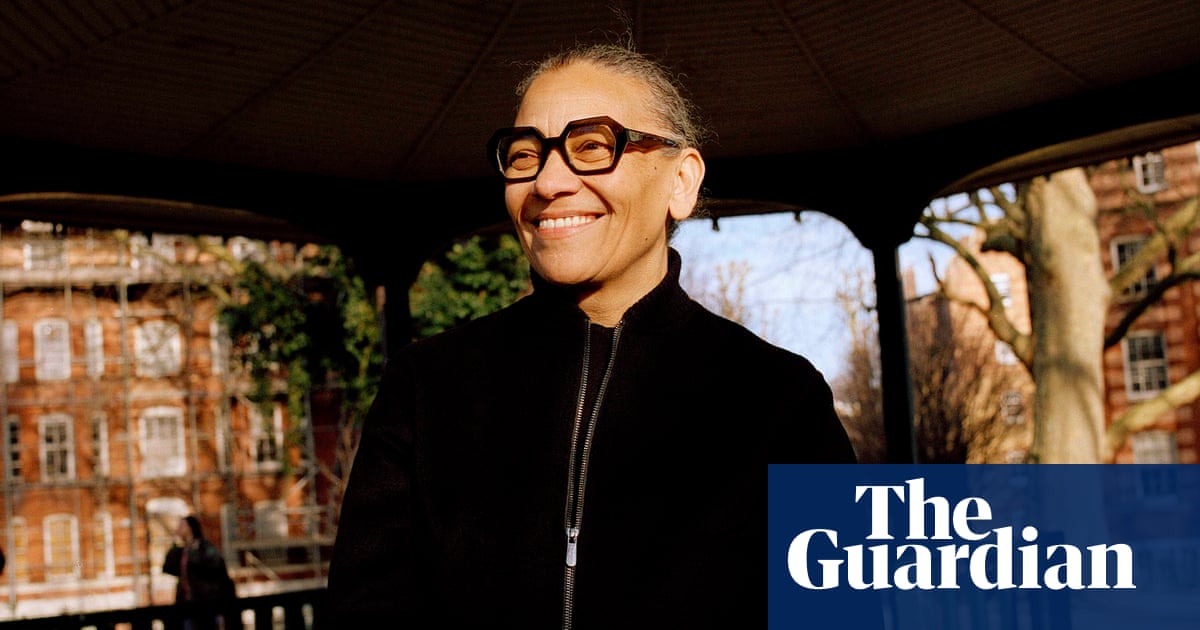Lubaina Himid, the artist known for her large stage-set-style installations that draw attention to figures overlooked by history, has been picked by the British Council to represent the UK at the 2026 Venice Biennale.
“I’m energised and so up for it,” the artist said of the challenge to fill the British pavilion with her work at “the Olympics of art”. She added: “I was ready to do it when I was 30 – it’s just that the British Council weren’t ready for me.”
Himid, 70, is only the second Black woman to represent the UK at Venice. Sonia Boyce was the first, in 2022, and received the top prize of the Golden Lion for her multimedia installation Feeling Her Way, a celebration of the Black female musicians who had inspired her. At the 2024 biennial, Britain was represented by John Akomfrah.
All three artists are pioneers of Black British art, for instance participating in the First National Black Art Convention, which was held at Wolverhampton Polytechnic in 1982. Their work was often overlooked or marginalised by the predominantly white mainstream art establishment, an experience which Himid says will influence her approach to the pavilion.
“We absolutely thought of ourselves as artists, but we were often in places that weren’t dedicated to the showing of art,” Himid said, citing multidisciplinary arts spaces like the Africa Centre and ICA in London. “You might come in for a cup of tea, or be queueing for cinema tickets, and you’d look at our work on the wall. We realised that those were the kinds of environments in which we could speak to the people we wanted to speak to, because they were welcoming.”
Himid is confident she can rise to the task of representing Britain. “Why not?” she told the Guardian. “I’m British. I’ve lived here since I was four months old.” She was born in Zanzibar and is now based in Preston, where she teaches at the University of Central Lancashire.
The artist believes that people whose national identity is called into question due to their race often have a sharp antennae for the public mood. “I don’t live here complacently. I for ever have my eye out for what’s happening. What’s the political situation? How are people feeling? What’s missing from museum collections? Sometimes, those of us who feel we don’t belong have several kinds of narratives running at the same time. I have all sorts of things to say about Britain’s history and the pavilion itself.”
Some of Himid’s work, such as her 2007 sculpture Swallow Hard: The Lancaster Dinner Service, and her paintings Le Rodeur, have drawn attention to the UK’s involvement in the slave trade. In recent years, there has been a rightwing pushback to the “woke” uncovering of such narratives, both by artists and bodies such as the National Trust, that has intensified since the election of Donald Trump.
“The right are always trying to unravel things,” Himid said. “But the point of artists is to open stuff up, let the cat out of the bag, spill the milk. It either opens up good conversations, or everyone just has to deal with it. The 1970s, when I was at art school, were tough times. So were the 1980s. But I kept making the work I wanted to make – there’s nothing else I can do.”
The choice of artist to represent their country can be a vexed one. Khaled Sabsabi was due to represent Australia at Venice next year, but was sacked after the shadow arts minister complained about a 2007 video work that had included images of former Hezbollah leader Hassan Nasrallah.
“Artists have to say what we want to say, and sometimes people don’t want us to say it,” Himid said. “No one’s ever told me to tone down my work. They let me show it and then they take the piss.”
This year, Himid will revisit a 1985 show of art by Black women which she was forced to stage in a corridor at the ICA which ran from the bar to the toilet – a far cry from the expansive halls of the British pavilion. Himid will spend the rest of the year making work for Venice before the biennale opens next April.
What kind of work does she plan to make? “I always paint, so there will be paint,” the artist revealed, hinting: “I’m interested in how surrealism meets the everyday, the space between a question and an answer. I’ve got a lot of work to do. It’s nerve-racking, but exciting. I wouldn’t be doing it if I didn’t think I had something interesting to say.”
Article by:Source: Alex Needham














